Hello everybody!
First I would like to thank everybody for your positive feedback on my plane!
After reading this thread about one of my planes, I thought it would be time to register to this forum and comment some things discussed.
The first picture in this thread shows me an my Plane "Big Kahuna 1" (BK!) at the EC 2011 in Poland.
This plane was the second "serious" stunter that I've built. The build of this model was covered in a thread at the German forum (see link above).
Two years after BK1 I started to build an improved version "Big Kahuna 2" (BK2). Modifications included (but were not limited to) more strength and stiffness by using more carbon fiber. Both planes BK1 and BK2 were used at the 2009 EC, 2010 WC and 2011 EC and will most likely be used next year for the 2012 WC.
Here are some pics of BK2:
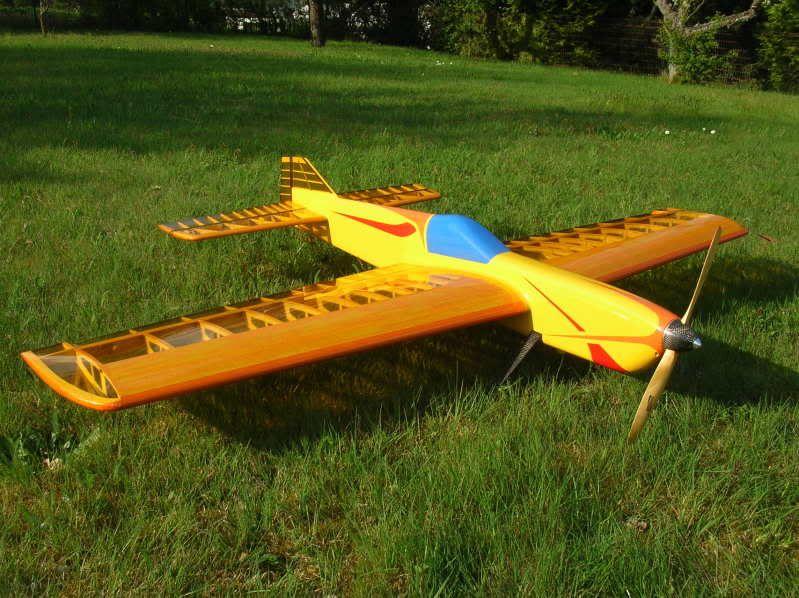
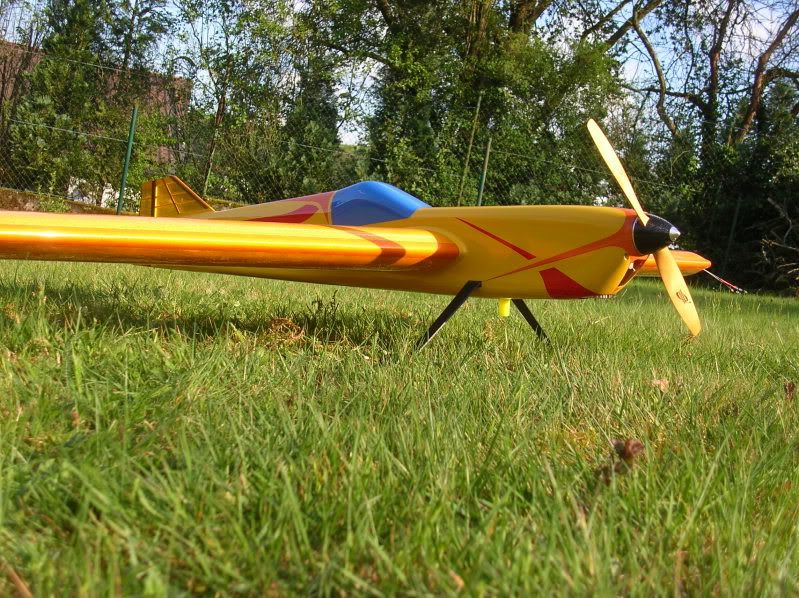
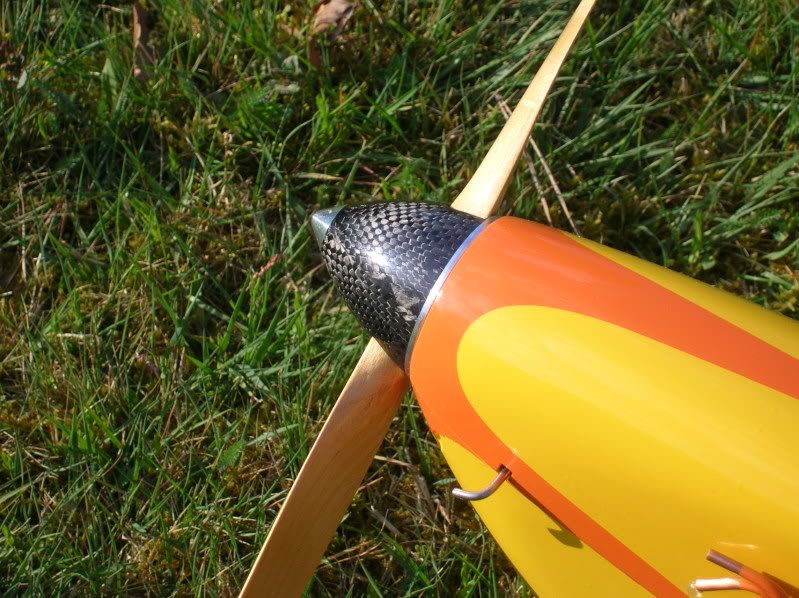
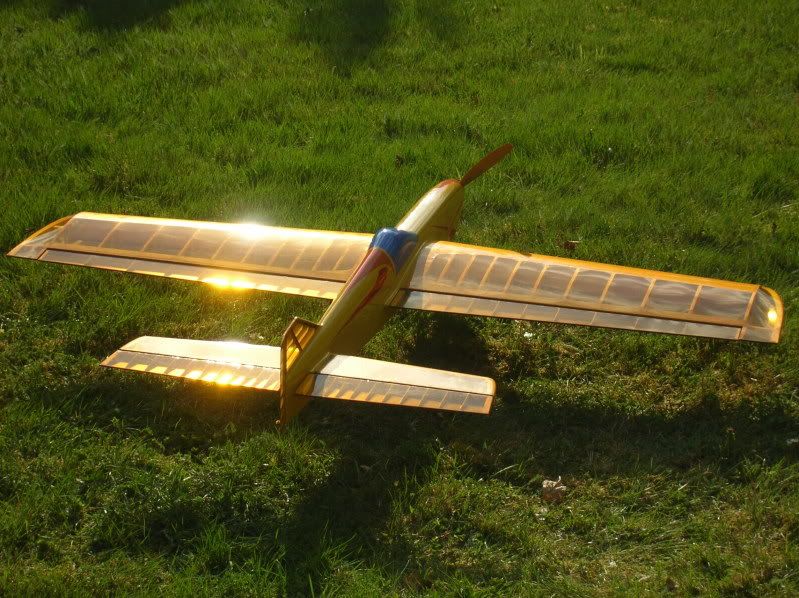
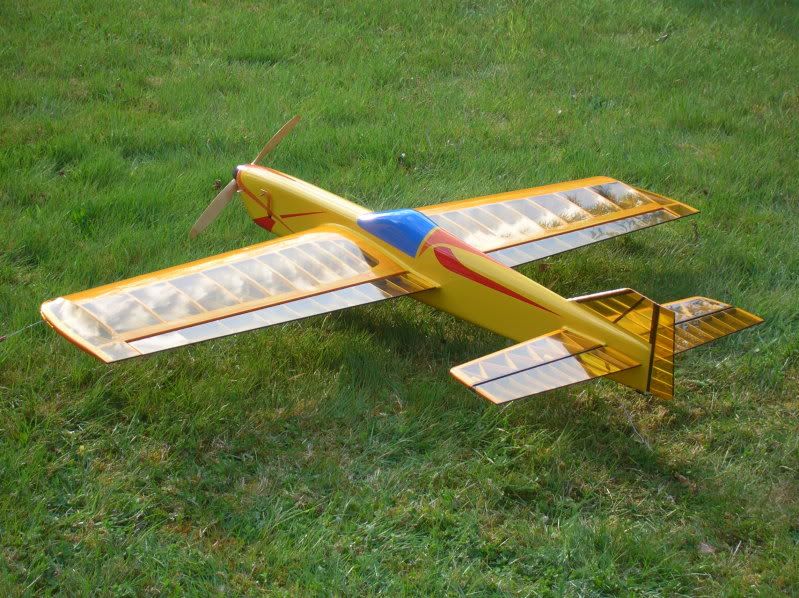
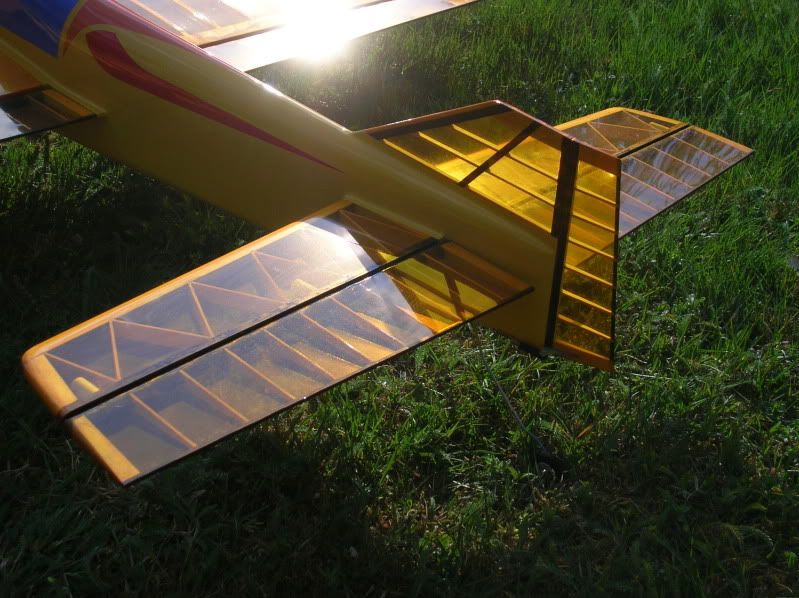
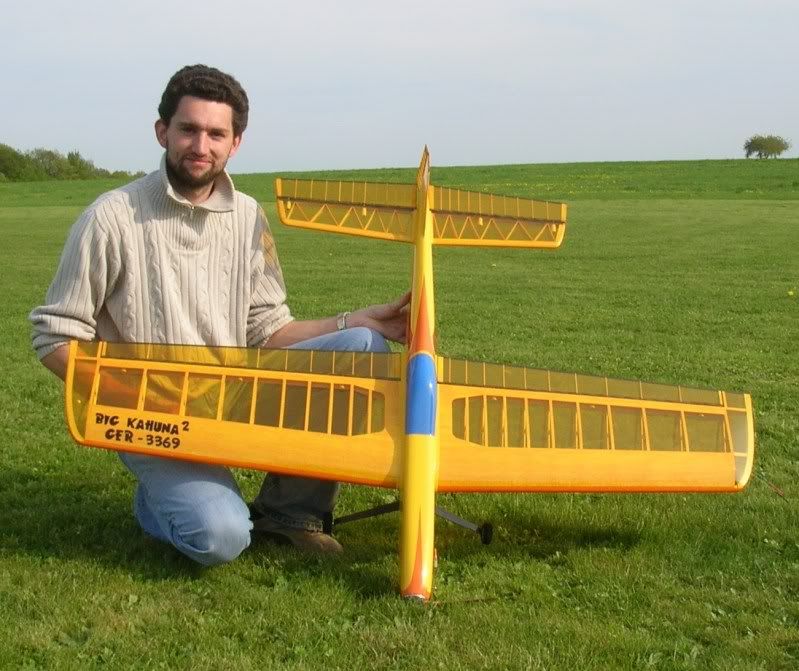
Here are my comments on some topics of this thread:
Why did I chose the unequal rib spacing?
1. It looks cool!!!!
2. I've not seen it before in F2B
3. It makes the planking at the root a bit stronger by supporting it. My first plane (Blackadder) got damaged when someone tried to hold it at the wing and broke the planking at the root with his fingers.
4. I designed the Wing in CAD and cut the ribs on a CNC machine. That means: Unequal rib spacing is just as easy to do as an equal spacing.
Does it add strength or stiffness?
I think it does. But I think the difference is small. To small to overcome the loss in stiffness and strength by using Oracover (German Monokote) instead of silk.
So why did I use plastic film instead of silk?
Because I think it looks cool :-)
I would also like to comment the weight.
Big Kahuna 1 (BK1) weights ~1580g (~55.7oz); BK2 is a bit heavier at ~1620g (~57.1oz). I think that is to light for such a big wing!!!! I don't know the wing area, but it was one of the bigger planes of the WC and EC and it was one of the lightest planes. It is like a feather in the wind. Every hiccup of the engine is instantly converted to a change in speed. Every gust and turbulence causes the plane to jump around. It is maneuverable, but far not as rock steady as other planes. It looks like Speedy Gonzales is trapped inside the plane, jumping up and down and round and round all the time.
Also: The light and stiff structure along with the Oracover film makes the plane very loud! Spectators report that, as soon as the bottom or upper side of the wing is visible (in a maneuver) the noise triples. Luckily the judges don't get to hear that much :-)
I love both planes and I hope they serve me well for the next years.
I'm curious what you guys are commenting now. I can't wait to read upcoming posts :-)
With kind regards
Frank
+ Sorry for possible spelling errors!